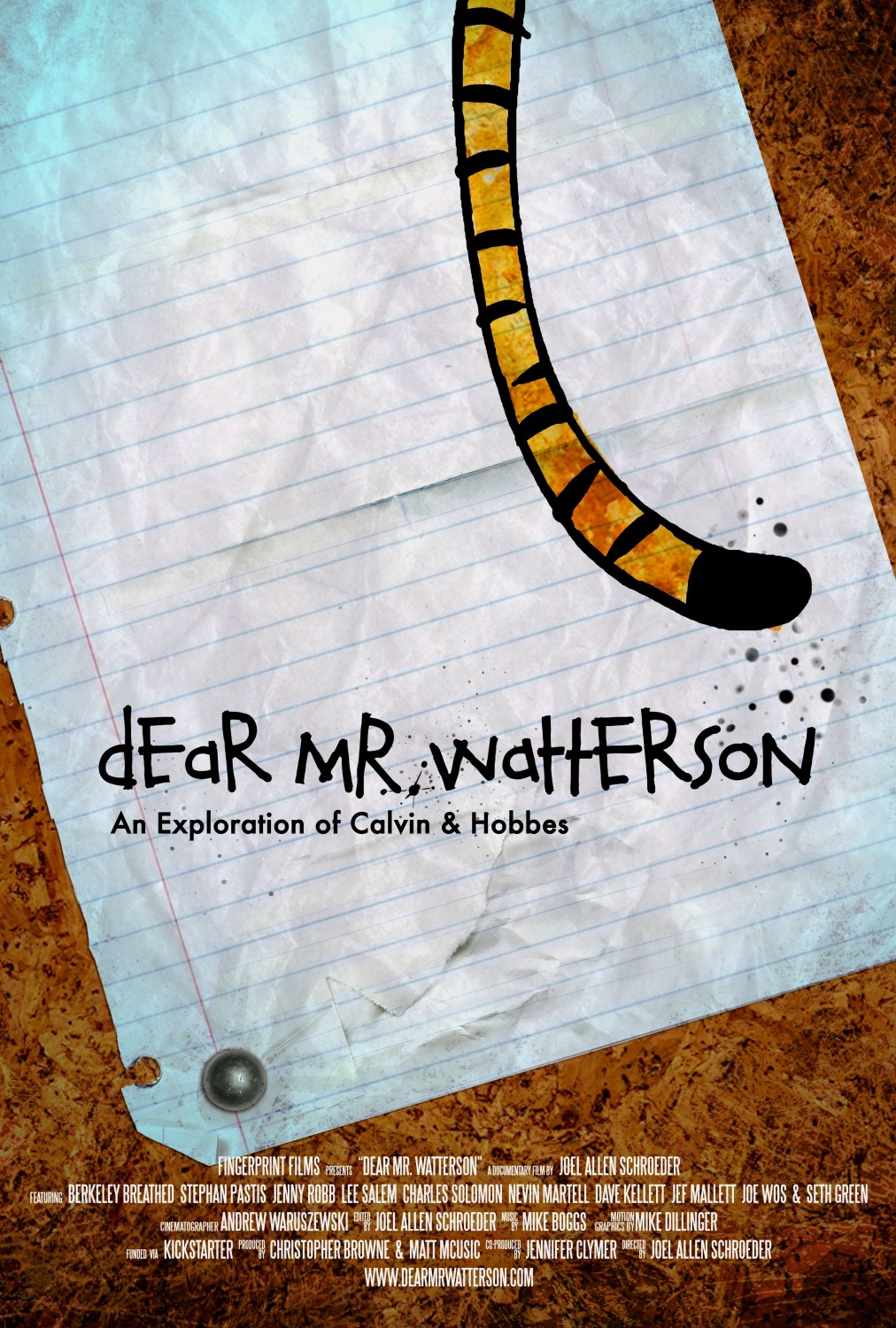As a fan of comics in general, especially Calvin and Hobbes, “Dear Mr. Watterson” was an exciting idea to me. Bill Watterson, the author of Calvin and Hobbes, is notoriously reclusive, so a documentary showing some of his personality and influence could have been really cool.
WATTERSON ABSENT FROM FILM
Unfortunately, Watterson was blatantly absent from the film. His presence was replaced by a series of fans repeating their love for the strip ad nauseam.
Despite the drooling redundant fan-boys and the lack of firsthand accounts from Watterson or people who know him, the film is still good. The filmmaker, Joel Allen Schroeder, does an excellent job of tying the whimsical anecdotes about reading the strip as a child with researching Mr. Watterson’s art and influences.
The film looks at other comic strip authors and their philosophies, as well as actors and artists who were influenced by Watterson. Schroeder brings up familiar strips like Charles Schultz’ “Peanuts” and Jim Davis’ “Garfield” as well as lesser known strips like Berkeley Breathed’s “Bloom County.” He even discusses the influence of more serious strips like “Little Nemo in Slumberland.” The film is well researched and well-edited, but there are some clear problems with it as well.
FILM PACKED WITH NOSTALGIA
The most glaring, obvious problem is the random nostalgia feasts. Every third person or so is a regular Joe who is in the film solely because he is a fan. It becomes repetitive and redundant very early and becomes truly boring by the end.
One such person is a man who has dozens of “Calvin and Hobbes” strips tattooed on his arms and legs. The viewer is not given the man’s name, and the tattoos become superfluous about 10 seconds in. The segment goes on for another couple of minutes, and the man explains, in detail, his various tattoos and their significance. He goes on to say that he tried to call Mr. Watterson and ask permission to get them, but could not get ahold of him and got the tattoos anyway.
The rest of the segments are similar. Fans gush on and on about how much they love “Calvin and Hobbes” and how much they wish they had a Hobbes doll. The issue of licensing, or lack thereof, is expounded upon more than it probably needs to be. In Schroeder’s defense, it is probably the most interesting thing about the film. Watterson’s reclusiveness and stinginess with licensing has come to be what defines the man more than anything else.
The bootleg bumper stickers featuring Calvin urinating on a desired target have become nearly as iconic as the strip itself. Berkeley Breathed, author of “Bloom County” tackles this issue in an interesting way in the film, discussing his numerous arguments with Watterson about the philosophies of marketing a strip, as Watterson was such a purist, and Breathed sold plush dolls and bumper stickers and everything else.
The film does acknowledge that Watterson is a fantastic writer and artist, an exceptional combination to have in a medium that’s barely hanging on. Watterson deserves all the praise he receives for his work. As a documentary about Watterson’s work and its effect on people, the film is decent, but it falls short of being engrossing and informative.







